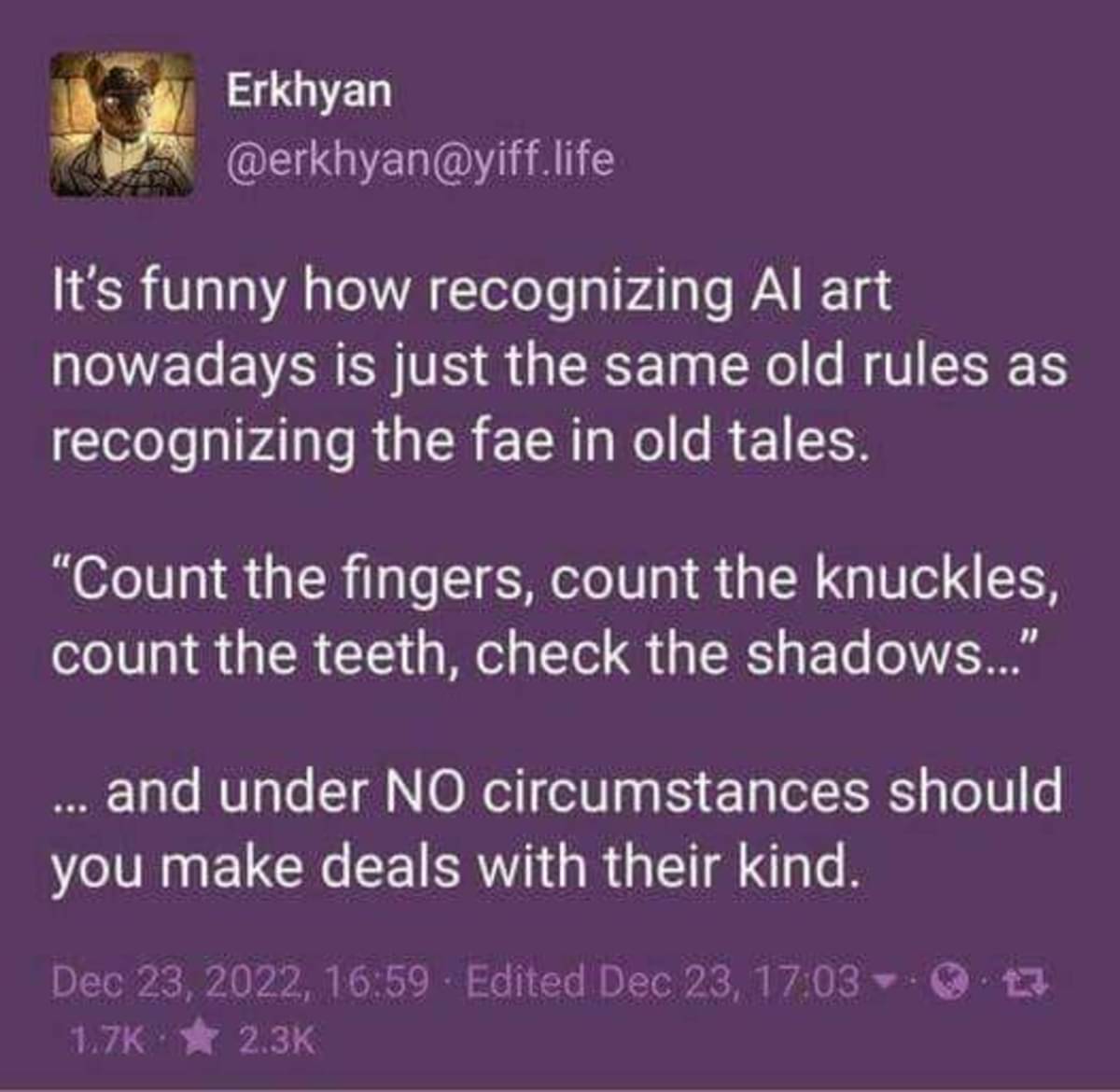this post was submitted on 05 Sep 2024
1243 points (99.3% liked)
Science Memes
10923 readers
2074 users here now
Welcome to c/science_memes @ Mander.xyz!
A place for majestic STEMLORD peacocking, as well as memes about the realities of working in a lab.

Rules
- Don't throw mud. Behave like an intellectual and remember the human.
- Keep it rooted (on topic).
- No spam.
- Infographics welcome, get schooled.
This is a science community. We use the Dawkins definition of meme.
Research Committee
Other Mander Communities
Science and Research
Biology and Life Sciences
- [email protected]
- [email protected]
- [email protected]
- [email protected]
- [email protected]
- [email protected]
- [email protected]
- [email protected]
- [email protected]
- [email protected]
- [email protected]
- [email protected]
- [email protected]
- [email protected]
- [email protected]
- [email protected]
- [email protected]
- [email protected]
- [email protected]
- [email protected]
- [email protected]
- [email protected]
- [email protected]
- [email protected]
- !reptiles and [email protected]
Physical Sciences
- [email protected]
- [email protected]
- [email protected]
- [email protected]
- [email protected]
- [email protected]
- [email protected]
- [email protected]
- [email protected]
Humanities and Social Sciences
Practical and Applied Sciences
- !exercise-and [email protected]
- [email protected]
- !self [email protected]
- [email protected]
- [email protected]
- [email protected]
Memes
Miscellaneous
founded 2 years ago
MODERATORS
you are viewing a single comment's thread
view the rest of the comments
view the rest of the comments

I had a similar thought about AI; that it's more like imagining something than actually drawing it. When you ask a program like stable diffusion to draw something, you're basically asking it to imagine something and then you reach inside its head to pull the image out. I think that if AI was forced to draw the "ol' fashioned way" then it'd be both better and worse. The results would be more "correct" but the actual quality would probably be worse. It'd also take it longer to get to the same level as a professional artist.
There are a ton of shortcuts you can take in the digital world to save time; you're basically a god limited only by your computer's specs. You can do extremely complex things near-instantly. This saves significantly on training time when it comes to AI. An AI forced to learn how to do art the ol' fashioned way would take significantly longer because it can't take the same shortcuts.
Yeah. You want to preserve the AI's abilities. Hence adding the "paste imagination" feature for example. If you simply use that and finish "editing" that is current AI. Then you can quickly redo only sections from imagination until they look good, maybe with a specific prompt or other form of understanding about what needs to be done and changed there.
We can invert our visual center, so basically we see an image, think about it, then can summon a mental version of that painting back as an image by converting the abstraction of it and change things about the abstraction until the mental image seems good. This abstraction can handle ideas like recognizing, moving, scaling, recoloring objects. It can do all we can imagine because it is literally how we interpret the world. Then we spend hours trying to paint that mental image we created using limited tools. If we could just project something the same way we see, that would probably match image-AI in the initial output but after tens, hundreds of passes you could likely within minutes create something completely impossible by any other means.